Cauda Equina Syndrome Usmle
Cauda equina syndrome usmle. Please share if you have usmle style questions about conus medullaris syndrome cauda equina syndrome IV disk herniation. EL HUSSEINYS Essentials Of Neurology For USMLE Step 1 EL HUSSEINYS Essentials Of Neurology For USMLE Step 1. Cauda equina syndrome - Etiology.
Cauda equina syndrome is caused by severe compression of the nerve roots in the thecal sac of the lumbar spine most commonly due to an acute lumbar disc herniation. If playback doesnt begin shortly try restarting your device. Mostly unilateral knee and ankle reflex both lost saddle present and LMN signs.
ReCauda equina syndrome 1049568. The pain will often occur alongside neurological deficits. Asymmetric areflexic flaccid paresis of the legs.
Cauda equina and conus medullaris syndromes have overlap in anatomy and clinical presentation. The cauda equina is a group of nerves and nerve roots stemming from the distal end of the spinal cord typically levels L1-L5 and contains axons of nerves that give both motor and sensory innervation to the legs bladder anus and perineum. UMN Signs seen Below Lesion then -- Steroids 1st then surgical decompression if signs of cauda equina develop.
Just to have a big picture. Cauda Equina Syndrome. Nerve roots injury can occur at any disc level.
Cauda Equina Syndrome - CRASH. When compression occurs at one level there is an increased likelihood of compression at multiple possibly bilateral nerve roots simultaneously. Cauda equina and conus medullaris syndromes have overlap in anatomy and clinical presentation.
The cauda equina contains multiple nerve roots. If cause is spinal cord injury -- ie.
Cauda Equina Syndrome - CRASH.
Anatomical location of the caudal equina source. Asymmetric areflexic flaccid paresis of the legs. Anatomical location of the caudal equina source. Cauda equina and conus medullaris syndromes have overlap in anatomy and clinical presentation. When compression occurs at one level there is an increased likelihood of compression at multiple possibly bilateral nerve roots simultaneously. A Medical Emergency 2017 views It is a medical emergency that entails compression of lumbar and sacral nerve fibers. Cauda equina syndrome. ReCauda equina syndrome 1049568. Clinical presentation asymmetric multiradicular pain.
UMN Signs seen Below Lesion then -- Steroids 1st then surgical decompression if signs of cauda equina develop. ReCauda equina syndrome 1050211. Mostly unilateral knee and ankle reflex both lost saddle present and LMN signs. 64 yr old had problem with back pain and while he was swimming he felt sudden weakness in his both legs and numbness from buttocks to toeRectal tone absentand no sensation in perineal area. ReCauda equina syndrome 1049568. EL HUSSEINYS Essentials Of Neurology For USMLE Step 1 EL HUSSEINYS Essentials Of Neurology For USMLE Step 1. Radiculopathy ex Sciatica 2.







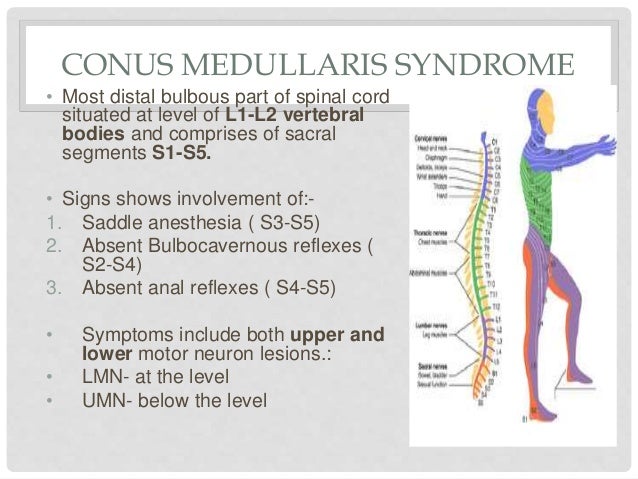



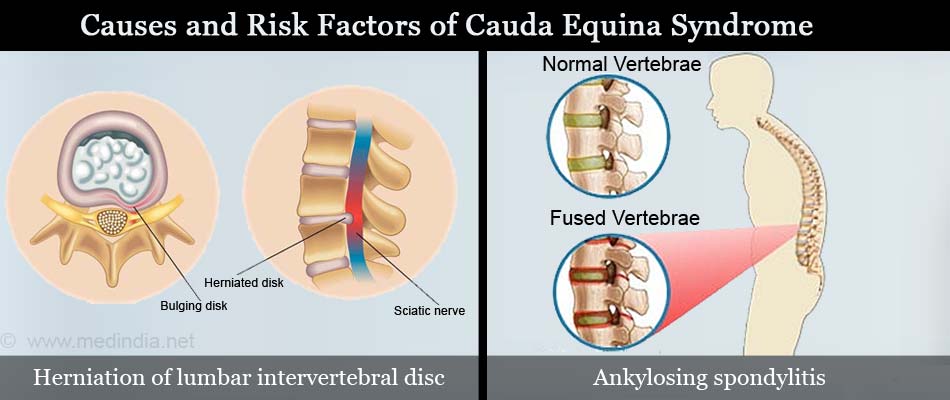
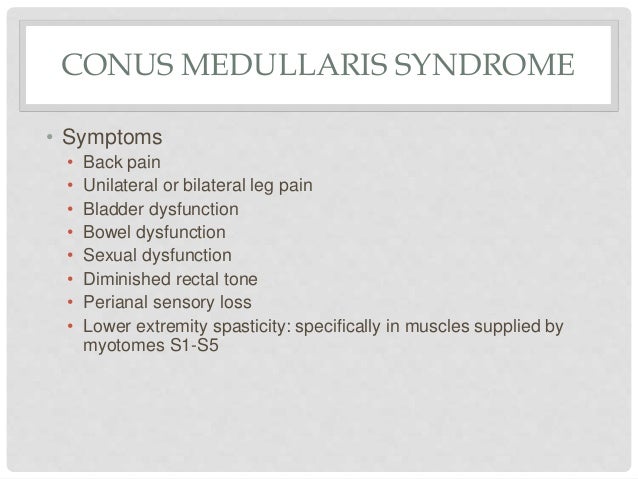





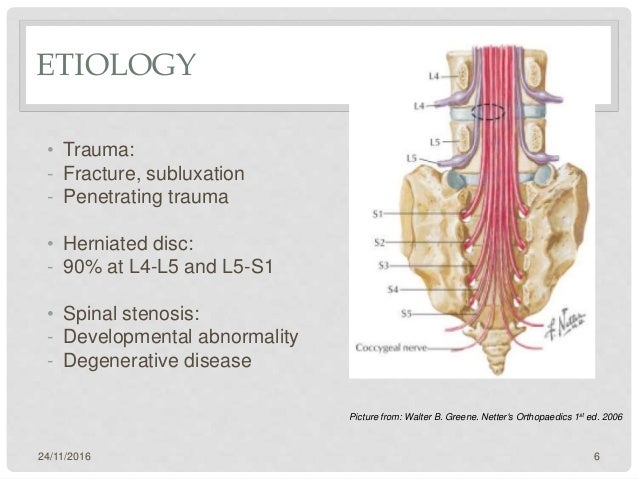


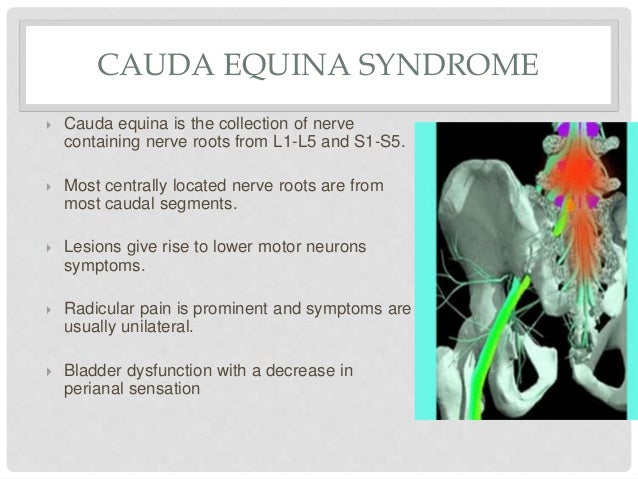




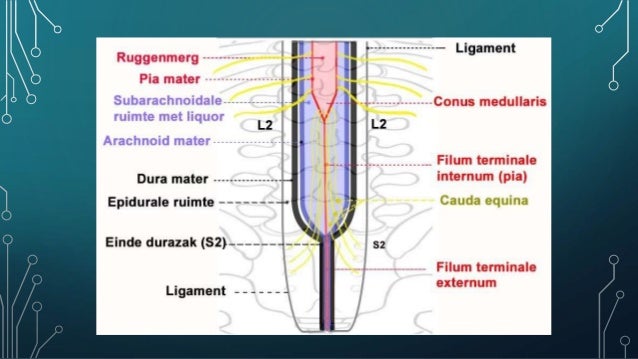



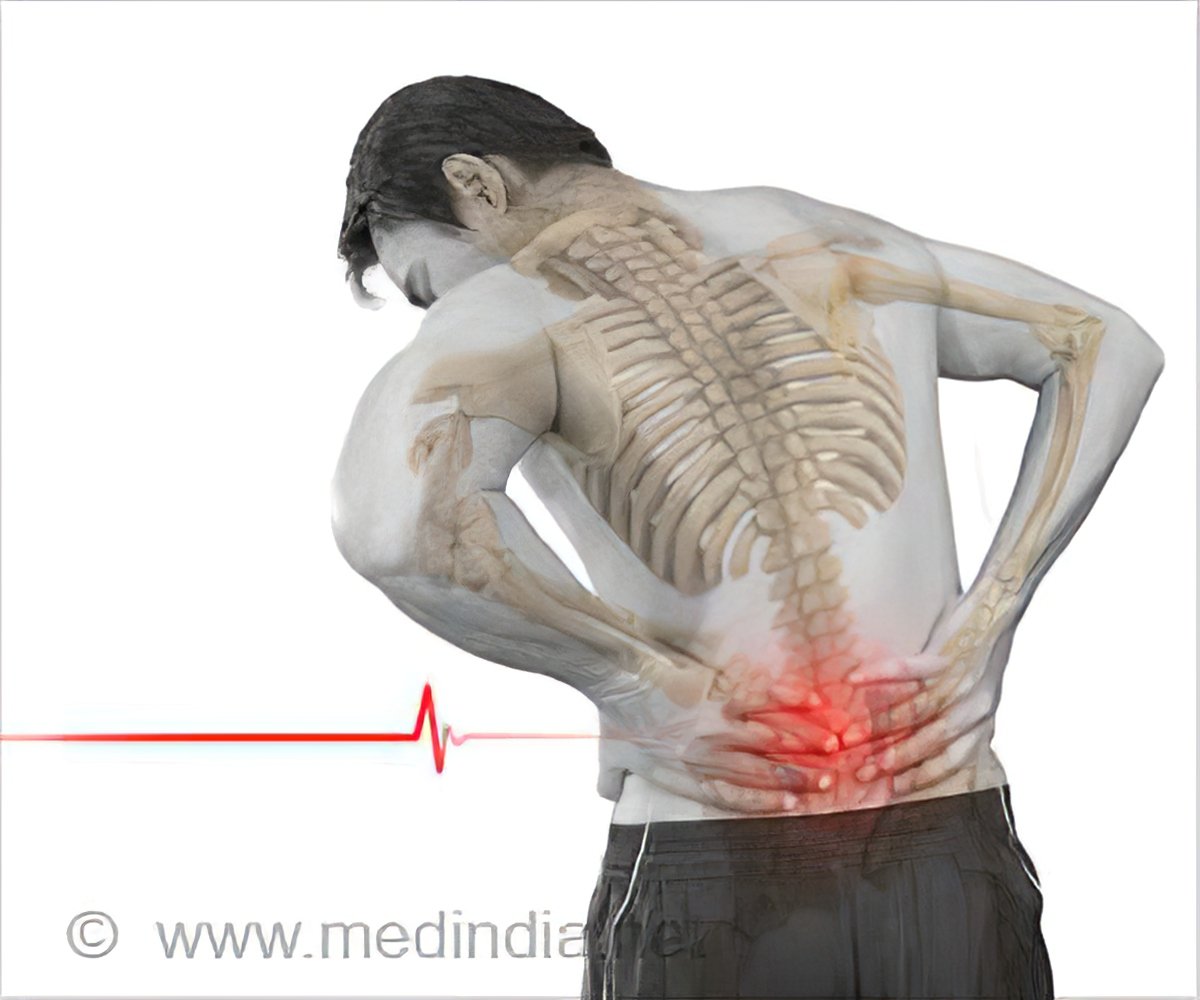











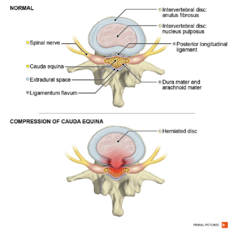

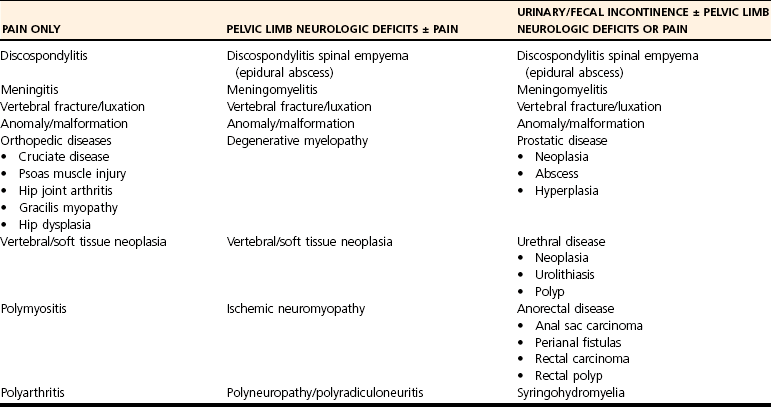
Post a Comment for "Cauda Equina Syndrome Usmle"